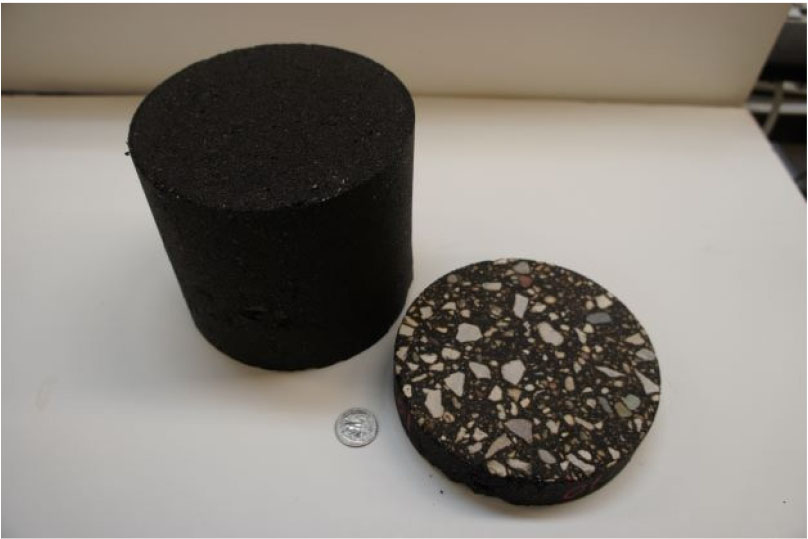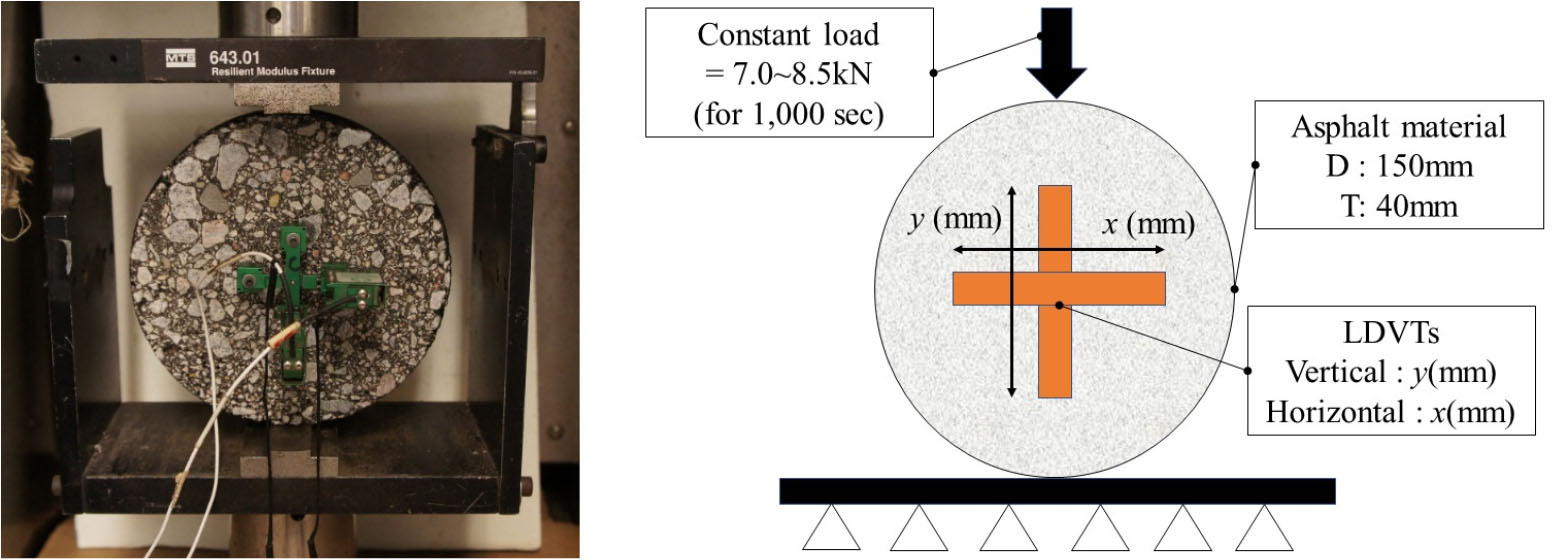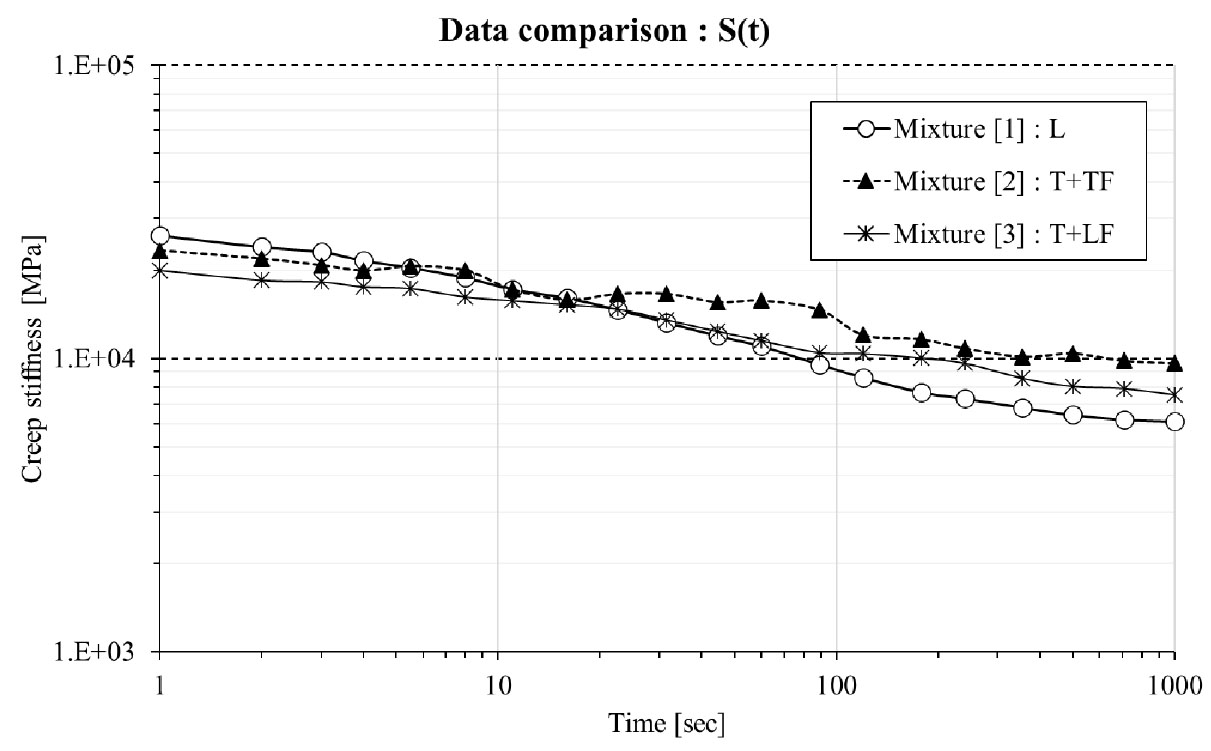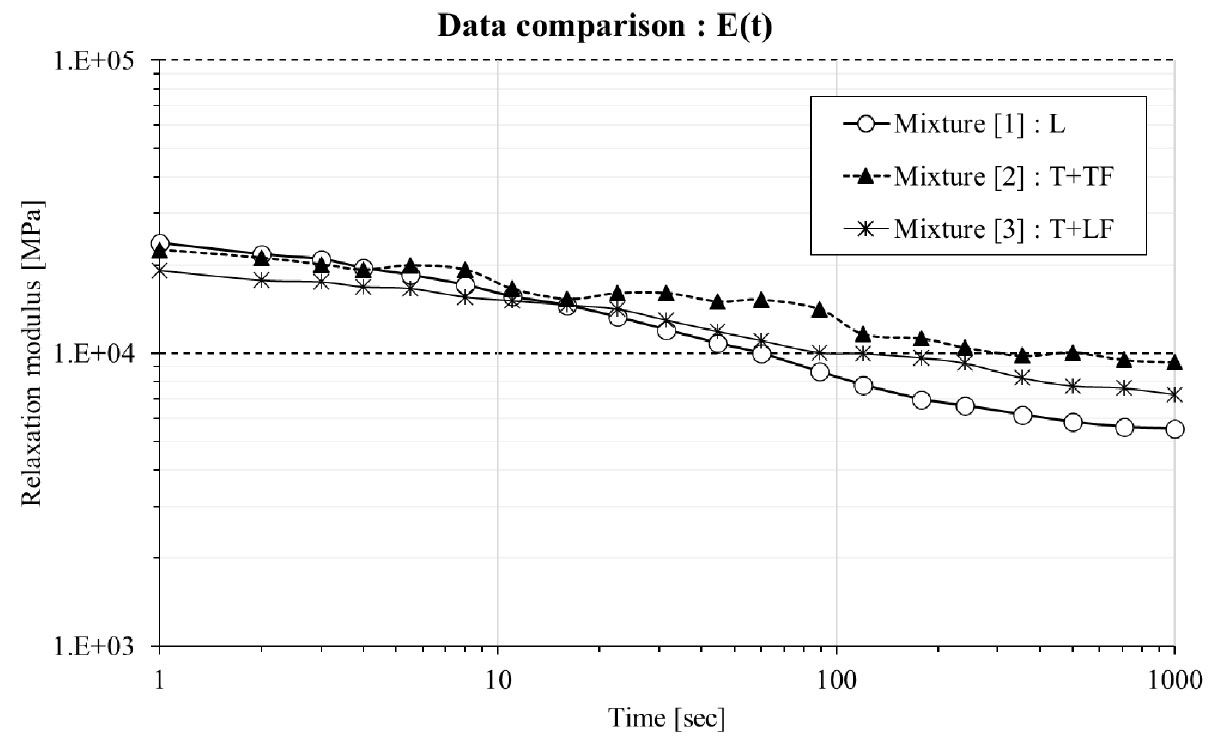1. Introduction
2. Material preparation for experimental work
3. Experimental work
4. Mechanical performance factor computation process part [1] : creep stiffness
5. Mechanical performance factor computation process part [2] : relaxation modulus
6. Data analysis
7. Summary and conclusion
1. Introduction
Asphalt mixture is a composite material consisted of three major components: aggregate, asphalt binder and air void, in volumetric concept (Moon, 2012; Cannone Falchetto et al., 2021). Asphalt mixture holds the mechanical performance through the physical connection between aggregate and asphalt binder. Moreover, the load bearing capacity is heavily rely on the characteristics of aggregate interlock system (Moon, 2010; Moon 2012; Cannone Falchetto et al., 2021). Therefore, it can be said that selecting proper aggregate source directly affects the performance of asphalt pavement. The asphalt pavement construction budget (i.e. not only for new-construction but also for repair work) in U.S. increased approximately 7 to 8 percent annually (PWMS, 2021). This business trend makes development and application of alternative (and/or recyclable) aggregate source in asphalt pavement not only inevitable but also essential (Oreskovich and Patelke, 2006; Moon et al., 2014). Using alternative aggregate source is essential in asphalt pavement industry not only for saving construction budget but also for mitigating environmental pollution issue. Application of alternative aggregates such as Reclaimed Asphalt Pavement (RAP), roofing shingles and taconite were considered in many pavement agencies during the past decades (Moon et al., 2014; Cannone Falchetto et al., 2021). In U.S. northern Minnesota territory, amount of taconite aggregate: a byproduct of taconite mining industries, are produced annually. Taconite ore: sort of iron ore, is consisted of five major elements: quartz, magnetite, various amount of iron oxides (e.g. hematite), carbonate and silicates (Zanko et al., 2003). In taconite aggregate the dominant mineral is quartz takes 55~60% portion approximately followed by 8~12% of hematite and 10% of magnetite (Zanko et al., 2003). The previous studies presented high compressive strength (e.g. 193~621 MPa) of iron formation rock (taconite) compared to the conventional compressive strength of limestone (e.g. 55~179 MPa) (Plummer, 1976; Stump and Hetzer, 1999). The specific gravity value of taconite is ranged 2.9 to 3.1 which is approximately 10% higher than the conventional aggregate. Moreover, absorption is 1.2% which is slightly higher than conventional granite aggregate: 0.74% (Zanko et al., 2003). The major chemical composition of taconite aggregate is presented in Table 1. Many studies presented the possibility of taconite aggregate application in road construction through various basic experimental evaluation process (Oreskovich and Patelke, 2006). However, mechanical performance of taconite material as an alternative aggregate source was not studied extensively. In this paper, suitability investigation of using taconite aggregate is performed by means of mechanical test: low temperature Indirect Tensile (IDT) creep test (AASHTO, 2003). A parameter for low temperature cracking resistance: creep stiffness: S(t) (and corresponding relaxation modulus: E(t)) result, is computed then compared visually.
Table 1.
Chemical composition of taconite aggregate
2. Material preparation for experimental work
One of remarkable achievement of taconite aggregate is this material has been used mixtures in asphalt pavement. Even though taconite aggregate has been applied in many pavement projects in U.S., there are not many publishing work related to mechanical performance of mixtures with these materials. In this paper, taconite aggregate was provided by United Taconite American Corporation (UTAC) Thunderbird mine in Eleventh located in northern Minnesota (e.g. Cuyuna range, Mesabl range and Vermillion range). Table 2 shows the schematic information of asphalt mixtures prepared in this paper. All the asphalt mixtures were designed based on Minnesota Department of Transportation (MN/DOT) specification (Zanko, 2009). More detailed information about the asphalt mixture design is mentioned elsewhere (Zanko, 2009). All the asphalt mixtures were made cylindrical shaped testing specimen by means of Super-pave Gyratory Compactor (SGC) in University of Minnesota pavement research center. Then the cylindrical shaped specimen was cut into specified dimension (i.e. diameter: 150 mm thickness: 40 mm) to perform low temperature Indirect Tensile (IDT) creep test (AASHTO, 2003). Prepared asphalt mixture sample picture for IDT testing (AASHTO, 2003) is shown in Fig. 1.
Table 2.
Prepared asphalt mixtures in this research
3. Experimental work
It is well known that low temperature cracking takes a crucial factor in asphalt pavement when alternative (and/or recyclable) aggregate resource is considered rather than using conventional aggregate (Moon, 2010; Moon et al., 2014). Due to this reason, a widely known low temperature cracking resistance performance evaluation testing method: IDT test (AASHTO, 2003), was considered. Fig. 2 and Table 3 present IDT testing set up picture and testing information, respectively.
Table 3.
Schematic information of IDT creep testing
4. Mechanical performance factor computation process part [1] : creep stiffness
The creep stiffness: S(t), is widely known as low temperature mechanical parameter for bituminous material such as asphalt mixture (Moon et al., 2014). In viscoelastic theory, creep stiffness: S(t) can be easily computed from the results of creep compliance: D(t), as can be seen Equation (1).
In IDT test, creep compliance: D(t), can be computed as (Zhang et al., 1997):
Where,
D(t) = creep compliance (1/MPa),
S(t) = creep stiffness (MPa),
H(t)m = measured horizontal deflection at time t (mm),
D = diameter of test specimen (=150 mm),
T = thickness of test specimen (=40 mm),
GL = gauge length (=38 mm),
P = applied load (7.0~8.5 kN, constantly),
Creep stiffness: S(t), can be computed from Equations (1) to (4).
5. Mechanical performance factor computation process part [2] : relaxation modulus
In this paper, not only creep stiffness: S(t), but also relaxation modulus: E(t), was computed then compared to provide feasibility of taconite aggregate application extensively. In case of viscoelastic material, E(t) and D(t) can be expressed based on experimental works as:
In Equation (5), E1 and D1 are positive constants (Park and Kim, 1999).
By applying Laplace transformation, Equation (5) can be expressed as:
Based on inter-conversion theory, E(t) and D(t) can be inter-related as (Park and Kim, 1999; Moon, 2010):
Finally, E(t) can be expresses from Equations (5) to (9) :
In this paper, results of S(t) and E(t) from asphalt mixtures mentioned in Table 2 were computed then compared visually.
6. Data analysis
The computed results of S(t) and E(t) are presented in Figs. 3 to 4 and Tables 4 to 5. It is found that taconite aggregate added mixture (i.e. Mixture [2] and [3]) presented relatively high amount of S(t) and E(t) compared to the conventional asphalt mixture (i.e. Mixture [1]). When asphalt mixture is consisted of 100% taconite aggregate (i.e. Mixture [2]), relatively high amount of S(t) and E(t) was computed which is negative on low temperature cracking resistance. However, when asphalt mixture is consisted of coarse taconite and fine lime stone filler (i.e. Mixture [3]), almost identical S(t) and E(t) computation values and trends were observed compared to the conventional asphalt mixture (i.e. Mixture [1]).
Table 4.
Data comparison result: S(t), for Mixture [1], [2], [3]
Table 5.
Data comparison result: E(t), for Mixture [1], [2], [3]
As a result, positive possibilities of taconite aggregate application on asphalt mixture production could be found. More extensive experimental works (e.g. number and types of testing material, conditions etc.) along with various mechanical performance computation approach (e.g. inter-conversion analysis, thermal stress computation etc.) are recommended as a future research topic to verify findings in this paper.
7. Summary and conclusion
In this paper, feasibility of taconite aggregate application on actual asphalt pavement was considered. Two different taconite aggregate added asphalt mixtures were prepared and tested. The low temperature cracking resistance ability was evaluated by means of mechanical testing: IDT mixture creep test. Relatively negative performance was found when asphalt mixture is consisted of taconite aggregate only. However, reasonable performance was observed when asphalt mixture is consisted of coarse taconite aggregate and fine limestone filler compared to the conventional asphalt mixture. This provides a positive possibility of taconite aggregate application in actual asphalt pavement construction. More extensive research efforts are needed to further verify findings in this study. In addition, environmental effect of taconite application on actual asphalt pavement construction needs to be crucially studied.








